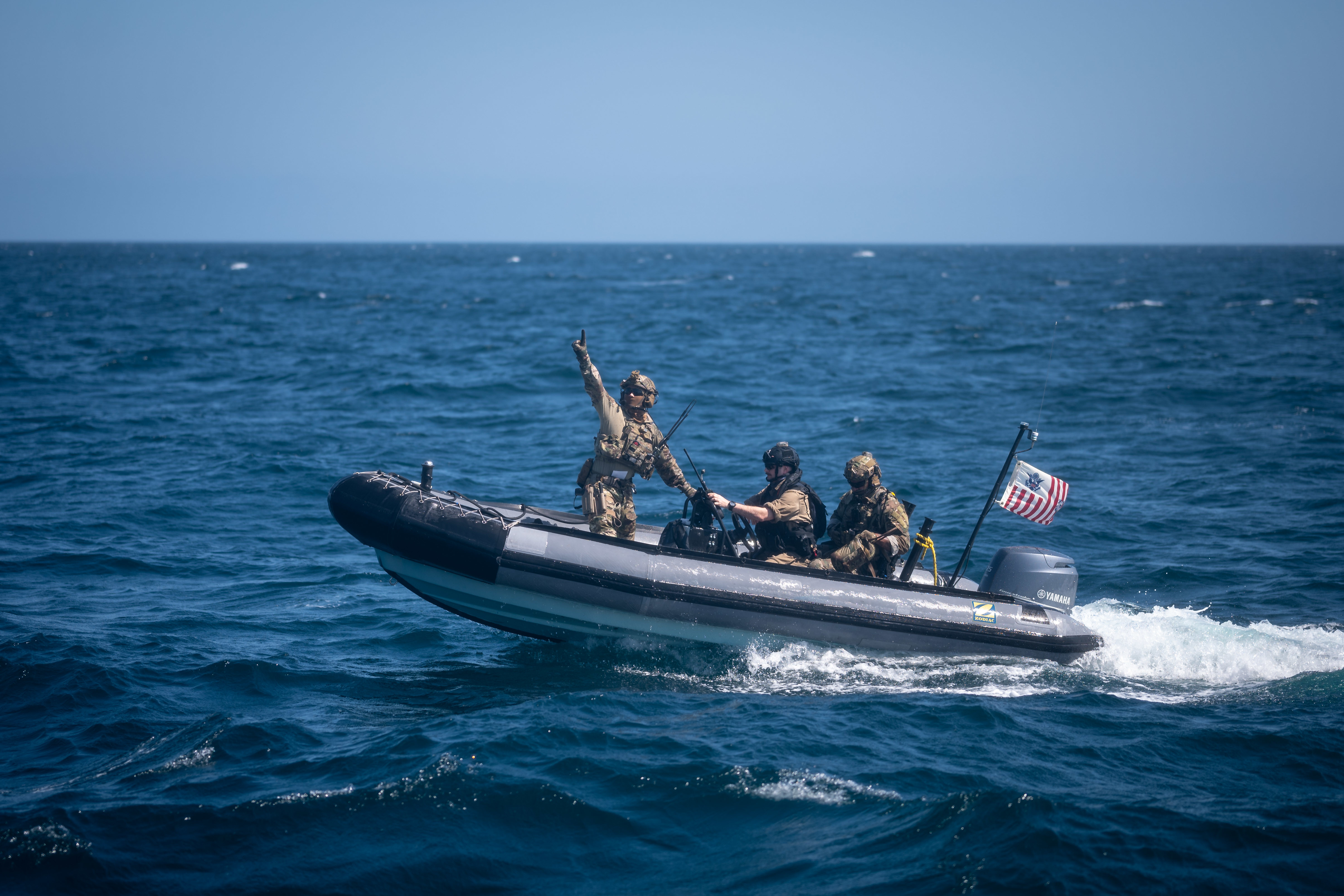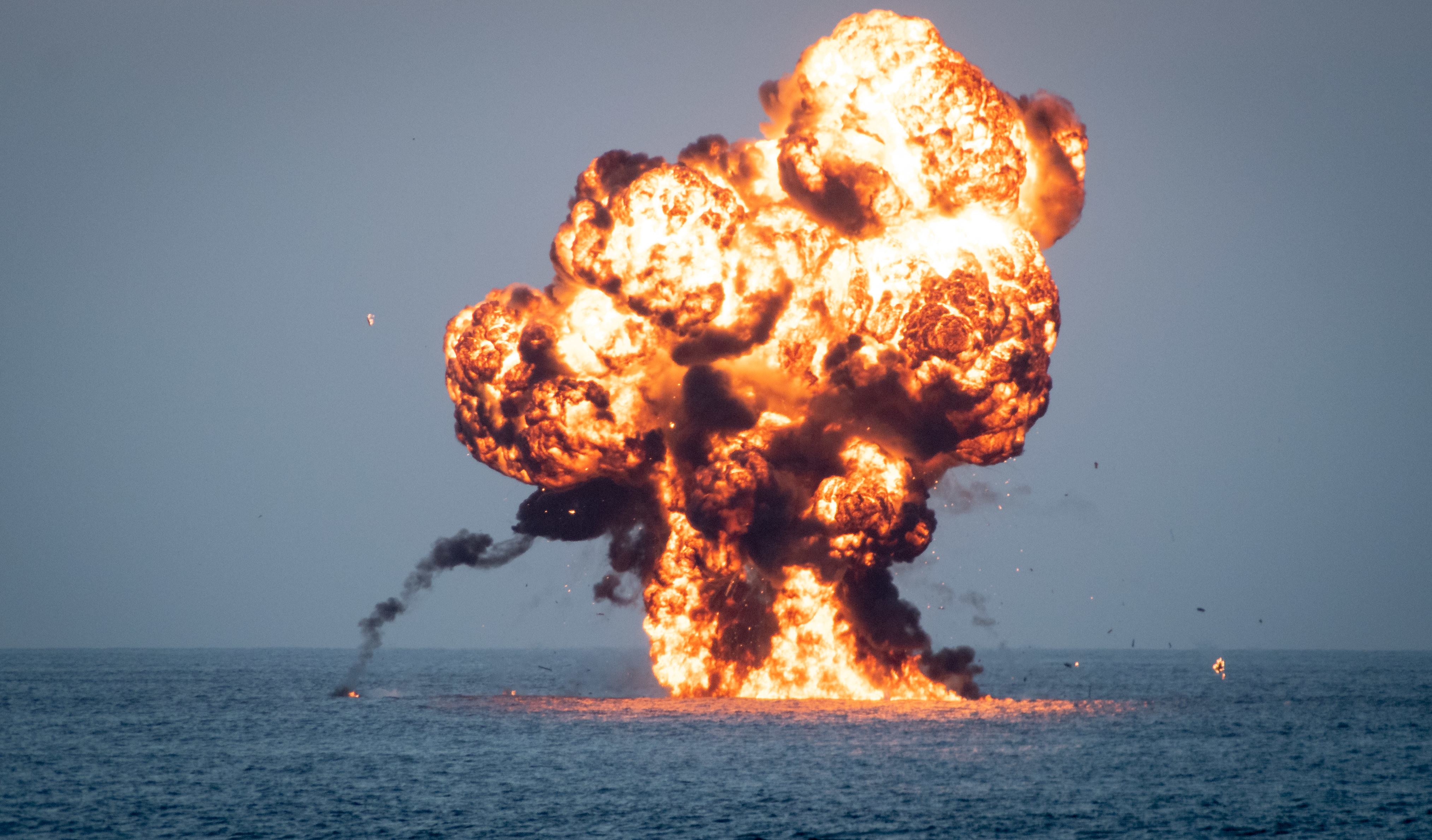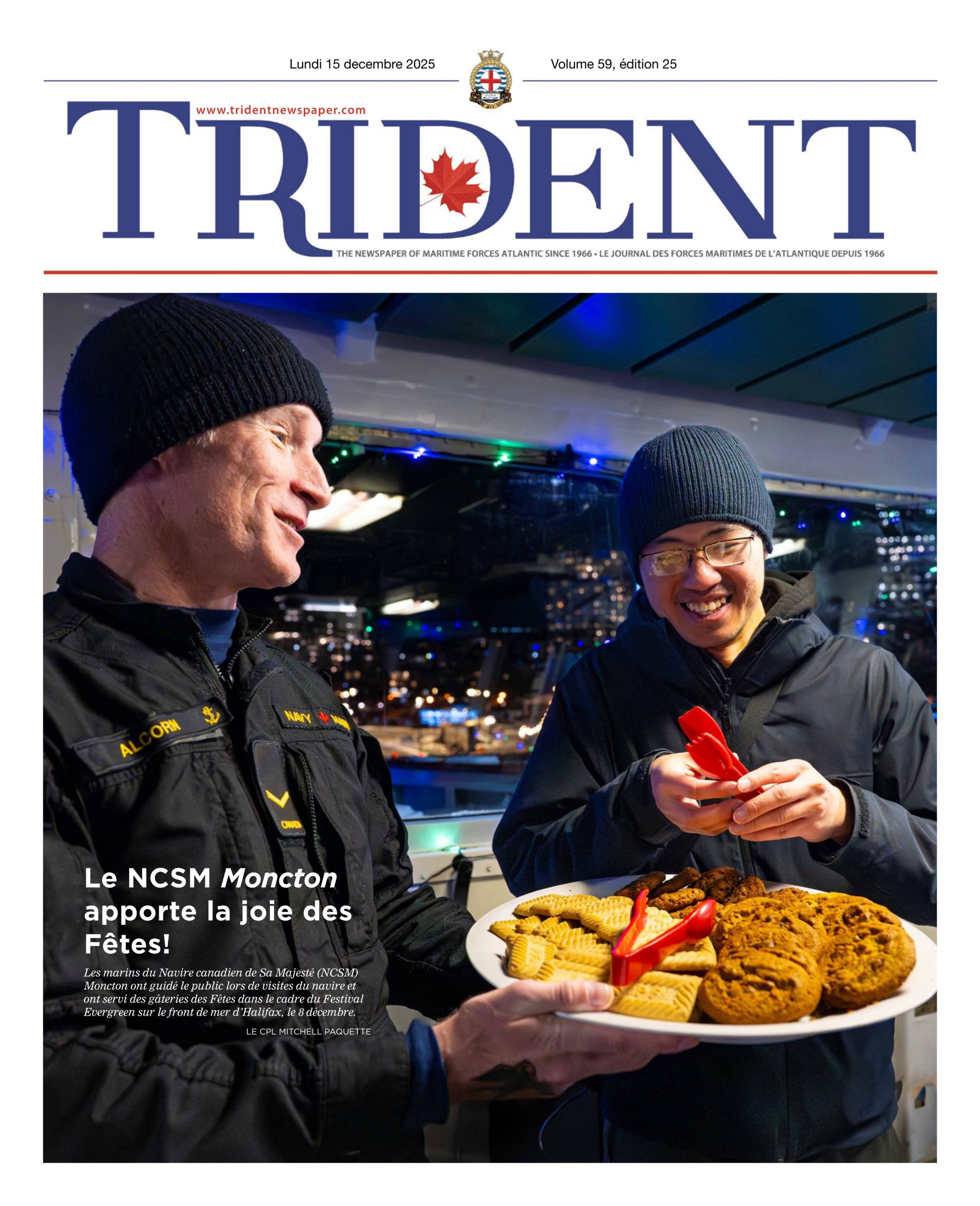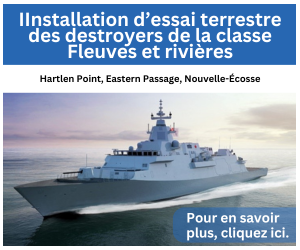
OP CARRIBE PAO
RCN ships seize nearly $44M in illicit drugs in support of the US Coast Guard
By Captain Sarah Harasymchuk,
Public Affairs Officer, Operation CARIBBE
Sunday, March 21, 2021 at approximately 2:30 p.m. (Central Time). It was quiet on the bridge. The ship was gently making waves, patrolling its assigned area of operations in the eastern Pacific. Suddenly, the radio crackled. It was a U.S. Navy (USN) P-3 Orion maritime patrol aircraft (MPA) reporting in. A suspicious “go-fast” vessel was in the area. HMCS Brandon, a Kingston-class ship deployed on Operation CARIBBE, was well positioned to make an intercept.

OP CARIBBE PAO
The Officer of the Watch, a Naval Warfare Officer, immediately took action, on the Commanding Officer’s orders, to alter course and increase the ship’s speed to intercept the target. “After I made the pipe to bring the ship to action, all the different parts of the ship’s company instantly came together to close-up on their respective stations,” the NWO describes. “Our success on this interdiction is the result of the expertise and training of the team coming together seamlessly with both Canadian and international partners.”
NCSM Brandon quickly launched its two rigid hull inflatable boats with members of the embarked U.S. Coast Guard Law Enforcement Detachment (LEDET) 103, to conduct a Right of Visit boarding.
The Naval Combat Information Operators (NCIOPs) have an important role in the mission, monitoring radio traffic and passing on critical information to the Officer of the Watch on the bridge and the LEDET.
The on-watch NCIOP, a Sailor First Class, describes what happened: “I started copying the information and confirming the details from the MPA. As an NCIOP, I am the conduit for all the information coming in and passing it to the key players on the ship. I plotted the latitude and longitude to determine the position of the vessel. Being in the moment was phenomenal and super exciting, to see what actually happens in real-time. I realized this was happening out of nowhere, but I knew what to do because all of my training kicked in.”
When the suspected smugglers detected the approaching law enforcement units, they began jettisoning what appeared to be multiple bales of contraband that were recovered by one of HMCS Brandon’s RHIBs. Meanwhile, the second RHIB intercepted the vessel with assistance from USCG Cutter Forward’s helicopter.
The USCG helicopter employed Airborne Use of Force on the non-compliant vessel. Warning shots were fired, followed by disabling fire to incapacitate the motors of the vessel and prevent it from fleeing the scene.
The USCG Cutter took custody of three suspected smugglers and 870 kg of cocaine, with a street value of approximately USD $33M. The case has now been turned over to the USCG for further action and prosecution by U.S. authorities.
“The ship’s company of HMCS Brandon is proud to see mission success on Operation CARIBBE in support of our allies, USCG Law Enforcement Detachment 103,” says Lieutenant-Commander (LCdr) Maude Ouellet-Savard, Commanding Officer of HMCS Brandon.
“This is an example of what the Navy can do for Canada. It’s a mission that demonstrates the Navy’s capability in a tangible way and creates real results that we can all be proud of.”
Just two days later, on March 23, the Senior NCIOP on board HMCS Saskatoon, a Master Sailor, logged a target report in the operations room. “We took immediate action to inform all key players: the LEDET Chief, the Operations Officer and the Officer of the Watch. The ship took a new course to steer us in the direction of the target, as we simultaneously readied the boat’s crews and the LEDET 108 for the boarding,” the NCIOP describes.
The target was initially reported by a USN P-3 Orion MPA operating in the area. HMCS Saskatoon’s two RHIBs sped through the waters to intercept the suspected smugglers undetected and the LEDET 108 conducted a Right of Visit boarding. Four suspected smugglers were found on board with contraband that later tested positive for cocaine and marijuana. In total, 250 kg of cocaine and approximately 45 kg of marijuana were seized valued at nearly USD $11M.
The USCG Cutter was then vectored to rendezvous with HMCS Saskatoon’s location on March 24, to seize the contraband and detain the suspected smugglers. After the suspected smugglers and contraband were removed, the vessel was deemed to be a hazard-to-navigation and HMCS Saskatoon’s Commanding Officer ordered the use of C4 explosives to successfully conduct the first Kingston-class operational demolition, destroying the suspect vessel.
HMC Ships Brandon et Saskatoon are currently patrolling in the eastern Pacific Ocean on Operation CARIBBE, to support Joint Interagency Task Force South who is responsible for the detection and monitoring of illicit trafficking in the eastern Pacific and Caribbean regions.






